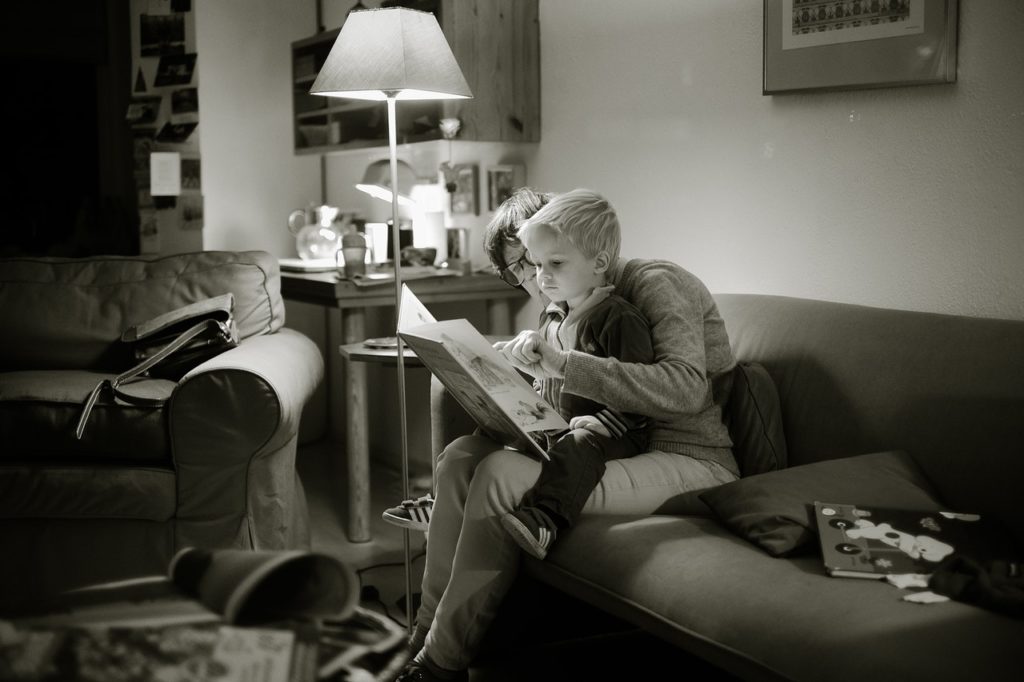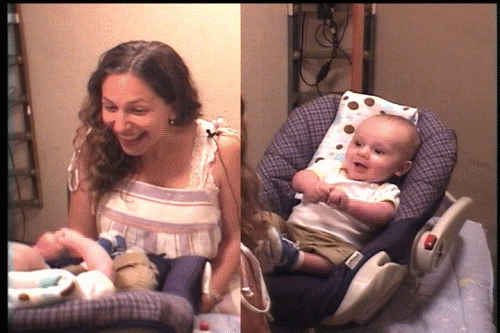
Finally, a Post for the Nerds
Attachment: The baby's sense as to whether the caregiver can help her manage internal and external threats and act as a secure base from which to explore. A child is said to be securely attached when she is able to be soothed and has a satisfactory reunion with her caregiver after separations.
Video Microanalysis: In this context, it involves the moment-to-moment study of split-screen video of mother and infant as they play together without toys.
This one is for the parents who want to dive a little deeper and read about the research that shapes The Good Enough approach. Without further adieu, let me introduce one of my favorite researchers in the field of early childhood, Beatrice Beebe. Probably her biggest contribution has been her work in attachment and video microanalysis. Attachment, the metaphorical baby of psychoanalyst John Bowlby and developmental psychologist Mary Ainsworth, has become an intense focus of study since its postulation in the late 1960s, and with good reason. Secure attachment at an early age is associated with a number of beneficial outcomes, including improved relationships with peers and teachers, greater independence, and increased competence. Insecure attachment, in contrast, is linked to a number of later maladies such as behavioral problems in elementary school and dissociative symptoms in early adulthood.
To study the precursors of attachment Beebe and her colleagues get mothers to bring their 4-month-old infants to the lab and videotape them playing face to face, similar to the image below.
The researchers look closely, sometimes on a frame-by-frame basis, at how the mother and baby coordinate their facial expression, movement, vocalization, touch, and gaze. From this relatively minimalist setup, Beebe and company can predict which babies will be securely attached to their mothers at 1 year.
How, you ask? Let’s jump in.
Beebe’s Babies (and Mothers)
In several studies, Beebe and friends notice interaction patterns between mothers and babies. For example, when babies look away momentarily (i.e., stop gazing at their mothers), a small group of mothers pursue their children by moving back into their field of vision, sometimes repeatedly. Researchers call this chasing and dodging, and, as cute as it might sound, it is thought to reflect the mother’s anxiety or dependency and is correlated with later attachment insecurity in the infant. From the baby’s perspective, she needs periodic breaks from the stimulation that comes from face-to-face gazing and interacting. When mom chases, the infant can’t get relief from the feeling that “this is too much.” Rather than acting as a calming presence, mother becomes the source of the baby’s distress.
The mother-infant dyads show other detrimental patterns as well. A percentage of mothers show more conflicting facial expressions in response to their baby's distress (e.g., they make surprised or positive facial expressions when the infant looks upset). These mothers also spend more time looking away from their child. And the baby's response? He shows more vocal distress and less touching, which may decrease his growing capacity to self-soothe. These relational dynamics also correspond to insecure attachment at 12 months.
"When mom chases, the infant can’t get relief from the feeling that “this is too much.” Rather than acting as a calming presence, mother becomes the source of the baby’s distress."
Beebe and other researchers now see evidence of an “optimal middle range” of coordination between mother and infant, a playful space in which neither mother nor baby appears hypervigilant or checked out. Their play allows for flexibility and lays the foundation for the child’s future social-emotional development because she is learning that communicating with her mother is safe and feels good, two conditions necessary for positive future relationships.
Finding the Sweet Spot
The first take-home from Beebe’s research is that babies need their parents to play with them. It’s good for them for many reasons, including its association with future secure attachment and relationship skills. Playing is the social-emotional equivalent of nursing: The baby will starve without it.
Another implication is that parents should be observant of their baby’s communications, consider them meaningful, and adjust accordingly. If, while you’re playing face-to-face the baby looks away, try pausing for a moment and following her lead (i.e., look where she looks) rather than compelling her to return to the game or getting in her face to make her look at you.
"Playing is the social-emotional equivalent of nursing: The baby will starve without it."
But does all this infant stuff matter for older children like toddlers or preschoolers? Sure. One of the key findings of this line of research is that a lot of communication is happening outside our awareness, too fast for our conscious minds to grasp. This is likely amplified when emotions run high. Getting to the sweet spot with a fussy 3-year-old can be hard but no less important than it is with a baby. Slowing down is helpful. Sometimes asking ourselves “What’s happening in my body right now?” is the best starting point for understanding why you feel irritated with or disconnected from your little one and how to patch things up. In my experience, the aphorism of “not too much, not too little” gives parents a guidepost for choosing how to interact with their young children across a spectrum of situations.
For those of you who want to get even nerdier and also really like visuals, check out Beebe’s picture book on mother-infant face-to-face interaction. And for a jargon-filled and sophisticated exploration of her work, download many of Beebe's publications for free at ResearchGate.




